Río Rojo
| Red River | |
|---|---|
| Título | Río Rojo |
| Ficha técnica | |
| Dirección | Howard Hawks |
| Producción | Howard Hawks |
| Guión | Borden Chase Charles Schnee |
| Música | Dimitri Tiomkin |
| Fotografía | Russell Harlan |
| Reparto | John Wayne Montgomery Clift Joanne Dru Walter Brennan Coleen Gray Harry Carey John Ireland Noah Beery Jr. |
| Datos y cifras | |
| País(es) | Estados Unidos |
| Año | 1948 |
| Género | Western |
| Duración | 133 minutos |
| Ficha en IMDb | |
Río Rojo es una película de 1948 protagonizada por John Wayne y Montgomery Clift. La producción, dirigida por Howard Hawks, es incluida por la American Film Institute entre las diez mejores del género Western.
Argumento
La trama gira alrededor del ranchero Thomas Dunson (Wayne), quien, a mediados del siglo XIX, trata de empezar su propia hacienda en Texas. Al inicio de su empresa conoce a un huérfano de nombre Matthew Matt Garth a quien adopta. Al cruzar el río Rojo, y no importándole la propiedad del territorio a manos de otro ganadero, se afinca en la zona. Tiempo después, al terminar la Guerra de Secesión, el rancho de Dunson se encuentra sumido en problemas económicos. Debido a esto, decide emprender la marcha a Misuri donde, según él, encontrará un buen precio por su ganado. Entre sus principales ayudantes se encuentran el entonces adulto Matt (Clift) y Groot Nadine (Walter Brennan). El transcurso de la travesía se desarrolla en io de muchos contratiempos. Agregado a esto, la conducta de Dunson se vuelve tiránica con sus empleados.
Por otro lado, aunque Dunson recibe recomendaciones de enviar su hato hacia Abilene, donde el ferrocarril ha arribado y la ruta es más segura, decide seguir su propósito inicial. En medio de una reyerta, Matt decide dirigirse a Abilene, a pesar de una amenaza de muerte del mismo Dunson ante su rebelión. Matt logra su propósito de vender el ganado en la ciudad, e incluso arregla un cheque a nombre de Dunson para darle parte de las ganancias. Sin embargo, el ranchero logra encontrar al joven Matt y entre ambos estalla una pelea.
Críticas
- New York Times: «en al menos dos terceras partes de la cinta, es una historia real de cowboys y de la dura, peligrosa vida que soportaban».[1]
- Turner Classic Movies: «uno de los grandes Westerns producidos en Hollywood».[2]
- Variety: «la producción y dirección de Howard Hawks le otorga una magnífica interpretación a la historia de la formación del oeste estadounidense...»[3]
Referencias
- ↑ Red River (1948). .Nytimes.com.
- ↑ RED RIVER: The Essentials. TCM.com
- ↑ Red River. Variety.com.
- Red River en Internet Movie Database
- Red River en Filmsite.org
- Red River en Allmovie
- AFI Crowns Top 10 Films in 10 Classic Genres
English text:
Red River
 Theatrical release poster | |
| Directed by | Howard Hawks Arthur Rosson (co-director)[1] |
| Produced by | Howard Hawks |
| Written by | Borden Chase Charles Schnee |
| Starring | John Wayne Montgomery Clift Walter Brennan |
| Music by | Dimitri Tiomkin |
| Cinematography | Russell Harlan |
| Editing by | Christian Nyby |
| Distributed by | United Artists |
| Release date(s) | September 30, 1948 (USA) |
| Running time | 133 min. |
| Country | United States |
| Language | English Spanish |
Red River is a 1948 Western film directed by Howard Hawks, giving a fictional account of the first cattle drive from Texas to Kansas along the Chisholm Trail. The dramatic tension stems from a growing feud over the management of the drive, between the Texas rancher who initiated it (John Wayne) and his adopted adult son (Montgomery Clift).
The film also starred Joanne Dru, Walter Brennan, Coleen Gray, Harry Carey, John Ireland, Hank Worden, Noah Beery Jr. and Harry Carey, Jr. Borden Chase wrote the script with Charles Schnee, based on Chase's story, "The Chisholm Trail."
Contents |
Plot
Thomas Dunson (John Wayne) is a stubborn man who wants nothing more than to start up a successful cattle ranch in Texas. Shortly after he begins his journey to Texas with his trail hand, Nadine Groot (Walter Brennan), Dunson learns that his love interest (Coleen Gray), whom he had told to stay behind with the wagon train with the understanding that he would send for her later, was killed in an Indian attack. Despite this tragedy, Dunson and Groot press on, only to chance on an orphaned boy named Matthew Garth (played as an adult by Montgomery Clift), whom Dunson effectively adopts. With only a couple head of cattle, Dunson and the boy enter Texas by crossing the Red River and Dunson proudly proclaims all the land about them as his own. Two Mexican men appear on horseback and inform Dunson that the land already belongs to their boss. Dunson dismisses this inconvenient fact, kills one of the men, and tells the other man to inform his boss that Dunson now owns the land. Dunson names his new spread the Red River D, after his chosen cattle brand for his herd. Fatefully, he promises to add M (for Matt) to the brand, once Matt has earned it.
Fourteen years pass and Dunson now has a fully operational cattle ranch. With the help of Matt and Groot, his herd now numbers over ten thousand cattle, but he is also broke as a result of having been on the losing side in the American Civil War. With the price of cattle in Texas not to his liking, Dunson decides to drive his massive herd hundreds of miles north to Missouri, where he believes they will fetch a much better price. After hiring some extra men to help out with the drive, including expert marksman Cherry Valance (John Ireland), they set off on their perilous journey northwards. Along the way, they encounter many troubles, including a stampede sparked by one of the men making a sudden noise while trying to steal sugar from the chuck wagon.
Deeper problems arise when Dunson's tyrannical leadership style begins to affect the rest of the men. When Dunson attempts to lynch two of the men who tried to desert the drive, Matt rebels. With the help of Valance and the other men, Matt takes control of the drive in order to take it to the closer railhead in Abilene, Kansas, leaving Dunson behind. This infuriates Dunson, who vows to track down Matt and kill him.
On the way to Abilene, Matt and his men repulse an Indian attack on a wagon train. One of the people they save is Tess Millay (Joanne Dru), who falls in love with Matt. Matt leaves in a hurry one night during a rain storm and has to leave Tess behind. Later Tess encounters Dunson, who is still on Matt's trail, and tries to dissuade him from his pursuit. She offers to bear him a son if he'll let Matt live, but he refuses.
When Matt reaches Abilene, he finds men there who have been eagerly awaiting the arrival of such a herd to buy it; Matt happily accepts an excellent offer for the cattle. Unknowingly, he has just completed the first cattle drive along what would become the Chisholm Trail. Shortly thereafter, Dunson arrives in Abilene with a posse to follow through with his vow to kill Matt. The two men begin a furious fight, which Tess interrupts by drawing a gun on both men and demanding that they realize the love that they share for each other. Dunson and Matt see the error of their ways and make peace with each other. The film ends with Dunson telling Matt that he will incorporate an M into the brand as he had promised to do years before and advises Matt to marry Tess.
Production
Red River was filmed in 1946 but not released until September 30, 1948. Footage from Red River was later incorporated into the opening montage of Wayne's last film, The Shootist, to illustrate the backstory of Wayne's character. The film was nominated for Academy Awards for Best Film Editing (Christian Nyby) and Best Writing, Motion Picture Story. In 1990, Red River was selected for preservation in the United States National Film Registry by the Library of Congress as being "culturally, historically, or aesthetically significant." John Ford who worked with Wayne on many films (such as The Searchers, Stagecoach, and The Man Who Shot Liberty Valance) was so impressed with Wayne's performance that he is reported to have said, 'I didn’t know the big son of a bitch could act!'[2] In June 2008, AFI revealed its "Ten top Ten"—the best ten films in ten "classic" American film genres—after polling over 1,500 people from the creative community. Red River was acknowledged as the fifth best film in the western genre.[3][4]
The character name Cherry Valance was also later used in the novel The Outsiders.
The character name Matthew Garth was also later used in the movie Midway.
Cast
- John Wayne as Thomas Dunson
- Montgomery Clift as Matthew 'Matt' Garth
- Joanne Dru as Tess Millay
- Walter Brennan as Nadine Groot
- Coleen Gray as Fen
- Harry Carey as Mr. Melville
- John Ireland as Cherry Valance
- Noah Beery Jr. as Buster McGee
- Harry Carey Jr. as Dan Latimer
- Chief Yowlachie as Quo
- Paul Fix as Teeler Yacey
- Hank Worden as Sims Reeves
- Ray Hyke as Walt Jergens
- Wally Wales as Old Leather
- Mickey Kuhn as Matt (as a boy)
See also
References
- According to TCM, "Arthur Rosson was given co-director credit because of his extensive and acclaimed work guiding the second unit...", http://www.tcm.com/thismonth/article/?cid=158108&rss=mrqe.
- ^ http://www.tcm.com/thismonth/article/?cid=12472, retrieved 2008-09-21.
- ^ American Film Institute (2008-06-17). "AFI Crowns Top 10 Films in 10 Classic Genres". ComingSoon.net. http://www.comingsoon.net/news/movienews.php?id=46072. Retrieved 2008-06-18.
- ^ "Top Western". American Film Institute. http://www.afi.com/10top10/western.html. Retrieved 2008-06-18.
Further reading
- Pippin, Robert B. Hollywood Westerns and American Myth: The Importance of Howard Hawks and John Ford for Political Philosophy (Yale University Press, 2010) 208 pp.
External links
| Wikiquote has a collection of quotations related to: Red River (1948 film) |
- Red River (1948 film) at the Internet Movie Database
- Red River (1948 film) at the TCM Movie Database
- Red River (1948 film) at Allmovie
- Internet Archive: March 7, 1949 radio adaptation of the film originally broadcast by Lux Radio Theater
- Detailed review of Red River
| [hide] | |
|---|---|
| 1920s | |
| 1930s | The Dawn Patrol • The Criminal Code • La Foule hurle • Scarface • The Crowd Roars • Tiger Shark • Today We Live • The Prizefighter and the Lady • Viva Villa! • Twentieth Century • Barbary Coast • Ceiling Zero • Sutter's Gold • The Road to Glory • Come and Get It • Bringing Up Baby • Only Angels Have Wings |
| 1940s | His Girl Friday • Sergeant York • Ball of Fire • Air Force • To Have and Have Not • The Big Sleep • Red River • A Song Is Born • I Was a Male War Bride |
| 1950s | |
| 1960s | |
| 1970s | |


























.-+albornoz+(4)+BLOG.jpg)

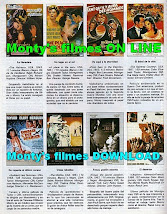














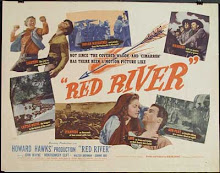
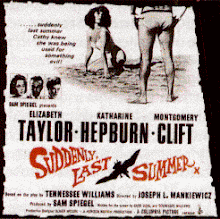




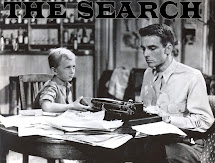

2.jpg)
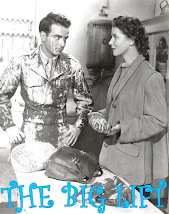.jpg)
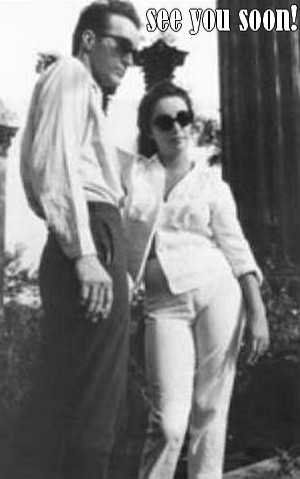

.jpg)

